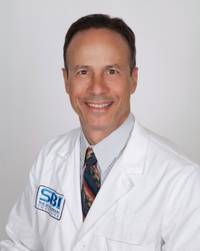Editor's note: This story was originally published in Health Care Headliners, a magazine meant to introduce the community to the people making a big difference in local health care. The doctors honored in the magazine come from nominations accepted by VEGAS INC.
At the time of this writing Dr. John Anson is at the base of Mount Everest. No, he’s not playing the role of adventurer (although he loves the outdoors and hiking) trying to make a historic climb. Instead, he’s sharpening his skills with other Wilderness Medicine Society members on how to best tend to outdoorsmen and women who injure themselves in the wild.
“Hopefully I can bring a lot of what I learn back and teach it to others,” he said.
Those others, more specifically, are the Las Vegas Metro’s Search and Rescue team. Anson, a neurosurgeon, gives more than 150 volunteer hours to Search and Rescue in any given year as a member of their tactical medical team, also referred to in the field as “SWAT Docs.”
Recently, he performed two surgeries in the morning at Southern Hills Hospital and spent his afternoon helping the search and rescue team provide medical attention to a stranded hiker.
“The search had been going on all day, but I had a surgery schedule, and as soon as I finished, I drove out to Red Rock. … Fortunately, they (the hikers) were in pretty good shape; a little cold, but in good spirits and healthy,” he said.
Recently a young Maryland woman broke her ankle in Black Velvet Canyon. She needed medical attention, but also needed to be hoisted out of the area with a helicopter. Another hiker recently fell in Calico Canyon and had a head injury that Anson helped tend to.
“They’re all challenging situations for different reasons,” he said. “Sometimes it’s medicine, sometimes it’s access. Sometimes it’s about getting a patient out and you’re lowering hundreds of feet down a steep face with a hoist. But I enjoy the team aspect of it. … They’re all such great people to work with.”
Anson’s commitment to Search and Rescue is also an opportunity to get away from the administrative side of medicine.
“Sometimes the practice of medicine gets to be a bit tough with all the insurance and regulatory issues,” he said. “It’s nice to get out and do something that’s just the medical stuff. It’s just about immediate needs and providing care, and doing it in an austere environment makes it all the more challenging.”
Anson’s day job comes with its share of challenges too. His work mostly involves spine surgeries, either from traumatic injuries or from degenerative conditions. He also performs brain surgeries, removing tumors or tending to traumas as well.
He has also conducted American Association of Neurological Surgeons-sponsored trainings for other surgeons on advanced minimally invasive spine surgery techniques.
The 20-year veteran of the field says the greatest advancements have come with the practice of using smaller incisions and bringing less overall trauma to normal tissues.
In the field of brain surgery, Anson has seen huge advancements with image guidance systems where pre-operative MRIs are downloaded into a computer navigation system that allow for multiple views of the brain. This gives the surgeon a better view of where to guide the surgical probe.
“You really have to stay on top of all this. We have meetings, take courses. Some of the changes have been incremental advances … but you really have to keep up with the progressive advances,” he said.
Oddly, in medical school, Anson had his eyes on either neurology or psychiatry, not surgery.
“Then I found I just really loved the hands-on technical aspects of neurosurgery. There’s such a wide variety of disorders we can take care of in both the brain and the spine. There’s more immediate gratitude than in neurology,” he said.
